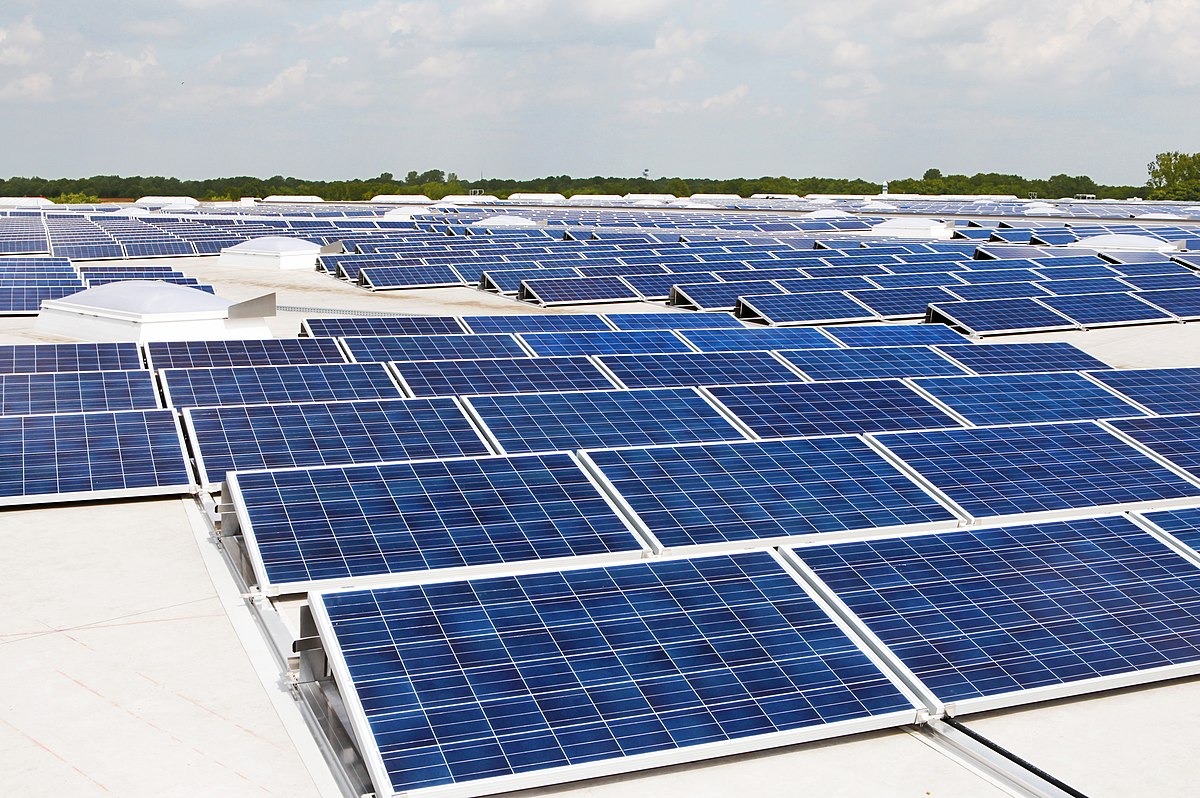Soon, 20% of Earth’s energy supply might be delivered through space-based solar power orbiting 36,000 km above the planet.
This is the goal of Space Solar, a technology company based in Oxfordshire, UK, that aims to be operational by 2035.
They stated that the solar space farm — which is expected to be 2km long — could produce more renewable energy than our ground farms do now.
We will receive that energy it harvests thanks to technology similar to that of mobile phone signals: The space-based solar power will be connected to receivers on Earth.
What are the benefits of solar power from space?
Solar farms consist of giant solar power satellites that orbit around the Earth. The European Space Agency (ESA) first announced the project in October 2022 as part of its research and development programme.
Your power could soon come from space as the European Space Agency mulls plan for solar farms in orbithttps://t.co/STQJWpZ1C2 pic.twitter.com/lKEmdtqPfj
— Daily Express (@Daily_Express) November 23, 2022
The goal is to deliver “new grid balancing and back-up power sources, currently provided mainly by fossil fuels, hydro and nuclear.”
As we know far too well, fossil fuels are one of the main drivers of climate change. To tackle the climate crisis effectively, we must change how we produce energy and rely on clean power.
“[A space-based solar power] would ensure that Europe becomes a key player – and potentially leader – in the international race towards scalable clean energy solutions for mitigating climate change,” said the ESA in a statement.
Solar power stations could potentially harvest more power than their terrestrial counterparts because they can catch sunlight for 24 hours instead of only during the daytime.

Moreover, in space, the sunlight is roughly ten times more intense than on Earth, considering also that much of the sunlight from space is absorbed by the atmosphere before it reaches our solar panels.
What are the negatives of space-based solar power?
Although the project of space-based solar power has many positive aspects, there are some negative things to consider, too.
First and foremost, the project will be extremely difficult to achieve and maintain since it will have to be bigger than anything ever flown in space. To give you an idea of the scale, the International Space Station, the largest space structure constructed in orbit so far, is 108 metres long. The farm, as stated above, will be almost 2km — that’s 20 times more.

The logistical aspect of the project is also challenging. Much like in a sci-fi movie, we will have to use space robots to repair the space farm while in orbit, which, along with the numerous rockets that will be launched, will pollute the environment.
“The robot will be able to come and repair a panel, remove it and put a new one on if necessary,” said Gwenaëlle Aridon, Head of the Robotics Laboratory at Airbus Defence and Space, ESA’s partner.
Related articles: Solar Panel Recycling: Are the Renewables Renewable? | Sunlight to Power: Evolution and Key Facts About Solar Energy | Solar Power From Space: How Would It Work?
Another aspect to consider is the presence of micrometeorites, which could potentially damage the solar space farm and also create huge amounts of space debris.
“For the lifecycle of the station, you have to design it in a way that it can be maintained and repaired continuously,” said Jean-Dominique Coste, senior manager at Airbus Blue Sky. “Because it’s such a large structure, you will have some defects in some panels. The ideal design of the antenna will be modular so that you could replace tiles and panels.”
Regardless of the challenging aspects of a space-based solar power project, it will be extremely useful to reduce the effects of climate change. If we want to limit global warming, we must cut greenhouse gas emissions by 45% by 2030. Gathering clean energy from a solar space farm might be the way to do so.
EU delivers on #ParisAgreement goals 👇
In 2017, the EU surpassed its #GHG emissions target for 2020 and we're well on the way to lower our greenhouse gas emissions by 45% by 2030.#ClimateAction 🌍 #EUCO— EU Council (@EUCouncil) March 22, 2019
What other companies are working on space-based solar power?
Since the benefits of space-based solar power seem to outweigh the downsides, other companies are working on realizing similar projects.
China, for example, plans to harvest solar power from space for civil and military applications and in 2025, it is reported that it will test its technology with the launch of a 100-kilowatt solar power station in low Earth orbit.
Japan Aerospace Exploration Agency has also invested steadily in space solar power since the late 1990s.
Three years ago, in October 2020, due to the number of other countries working on a similar project, the Aerospace Corporation urged the American government to collaborate with industry and international partners to develop space solar power technologies, stressing the benefits of mastering such an important technology.
Overall, the US government seems to be interested in solar power technologies. In January 2023, the Caltech Space Solar Power Project (SSPP) launched a prototype in space to test numerous key components of a potential solar power farm — a major milestone in the space solar power field.
More recently, the Californian space manufacturing startup Orbital Composites and the Michigan-based space energy company Virtus Solis announced their collaboration to create a solar space farm.
Learn more about our mission to expand renewable energy with #SpaceBasedSolar on @Gizmodo: https://t.co/6HaUVgRdzg #Space #RenewableEnergy #GreenTech #Energy #Solar #3DPrinting #AdditiveManufacturing pic.twitter.com/LyfhOVqf5e
— Orbital Composites, Inc. (@OrbitalSays) June 21, 2023
In the press release of June 20, 2023, they explained that Virtus will focus on the project’s technology — such as the antennas and electronic components — whereas Orbital will bring in its in-space manufacturing expertise.
Overall, the number of companies focusing on space-based solar power is increasing. Although when exactly we will be able to witness a solar space farm is unknown, the clock is ticking.
As climate change accelerates, limiting global warming has become imperative: We must search for every possible technological solution — and I would argue that this is one of the most attractive.
That being said, technology alone cannot solve the problem. We will still need to come to a global political agreement to phase out fossil fuels since they are the main source of both global warming and plastic pollution.
Editor’s Note: The opinions expressed here by the authors are their own, not those of Impakter.com — In the Featured Photo: Artist’s impression of a solar power satellite. Featured Photo Credit: The European Space Agency.










